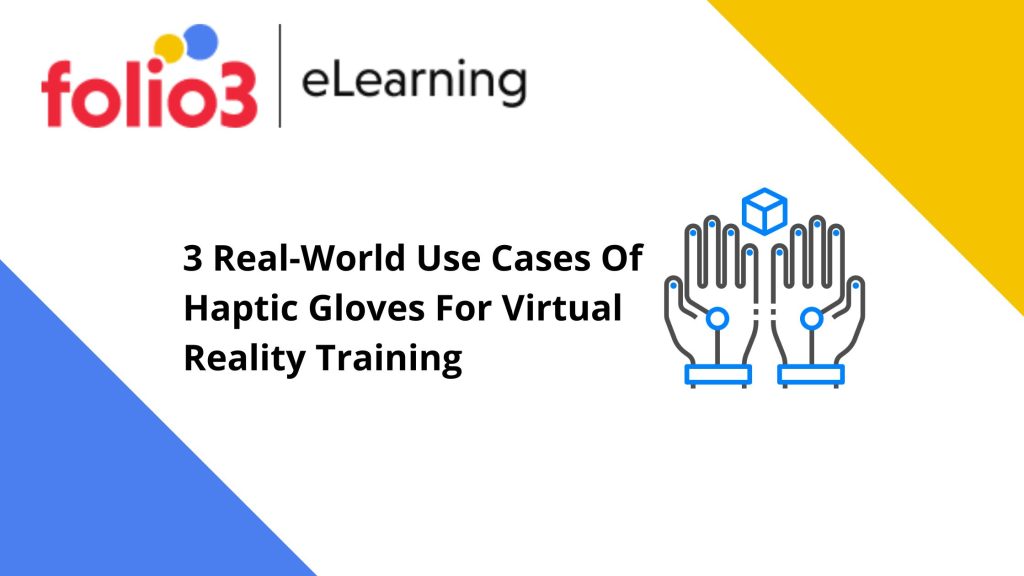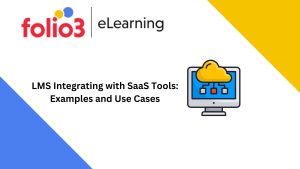
Virtual Reality training is a method that imparts practical skills to the trainee utilizing virtual or mixed reality. It has been demonstrated that practicing produces results that are far more effective than those obtained by conventional instruction. Improving the user experience is essential in VR training. The added value, user experience, and effectiveness of the training are all considerably improved by adding haptic feedback.

The Executive Summary
By offering highly realistic, engaging training experiences with precise motion tracking, haptic gloves are upgrading how businesses train their personnel. Haptic gloves improve employee safety and productivity by increasing immersion and sensory feedback during virtual reality training. Therefore, the three Haptic use cases that are enhanced by these VR gloves are the main emphasis of the article.
What Factors Need To Be Taken Into Account While Designing VR Gloves?
.) Developing And Integrating Skills
When creating VR training content, the developer and integrator competencies are crucial to take into account. Applications for VR gloves training are well-served by excellent user interfaces and advanced accessibility and usability features.
.) Application Development
The user company must be knowledgeable about virtual reality technology. It should have successfully deployed evidence of concept validating the ROI in order for a virtual training application to be effective.
Use Cases Of Virtual Reality Training
Use Case # 1 – Electrical Equipment Maintenance And Training Systems
A well-known electrical equipment supplier frequently commercializes relatively low or medium-voltage electrical equipment that requires maintenance. The customer’s workforce must attend periodic training of the customer must participate in periodic training in order to learn and review the processes to carry out the maintenance activities. At training facilities all throughout the world, this training is conducted.
The workers must travel to the training facility and stay there for a few days in order to participate in training exercises on dummy equipment under the trainer’s guidance. The maker of electrical equipment created a haptics training solution to automate staff maintenance and surveillance training so that training sessions could be delivered to customers. To enable their customer to retain the training scenarios and experience as documentation, the solution additionally commercializes a VR training system with haptics and VR equipment.
The customer’s objectives were to decrease risk, transfer skills, cut costs, and boost profitability. Four 4 VR Touch (Go Touch VR) gloves were added to the system designed in Unity. These gloves offer tactile sensations primarily associated with grabbing and manipulation by providing skin indentation feedback.
To improve usability and skill transmission, the simulation now includes haptics gloves. At first, it was difficult to explain this value to the buyer. It was simpler to discuss how to properly employ haptic estimation in the simulations once the customer realized that haptics did not faithfully represent reality.
As a result, the client is still utilizing the project after two years. The long-lasting effects of this use case are largely due to the improved usability that haptic feedback creates.
Use Case # 2 – Training With An Interactive Flight Simulator
This VR exercise, developed by BeBop sensors and HTX Labs, immerses students in a pilot training situation more thoroughly than a standard flight simulator. Learners sit in the pilot’s seat in the cockpit after donning their haptic feedback gloves and VR headset.
In this simulated cockpit setting, students carry out the following tasks:
- Taking hold of and operating the plane’s yoke.
- Using the throttle to accelerate and decelerate the flight.
- Engage the cockpit’s various knobs, switches, and buttons.
Before entering the cockpit of a real aircraft, this experience gives students a genuine sense of piloting an aircraft. The haptic feedback gloves’ accuracy and precision enable learners to practice using important equipment in a realistic way before entering a cockpit in the real world.
Use Case # 3 – The Procedural Training
One industry where VR training is most applicable is aerospace because it would be costly to reproduce a whole cockpit. Additionally, there are two other sorts of problems even if an airline or other aviation-related business has the resources to spend on this kind of training:
The simulated cockpits are used constantly and exhibit outdated technology. In addition, they are designed solely to reproduce the most crucial functions and cannot give a wider foundation.
The Sensory VR Free gloves, which provide affordable and smooth integration into current hand and finger tracking applications, are presented in this use case. Even if the hands are not within the direct line of sight, it is still possible to determine their exact location and what they are doing without using a separate tracking system. It is beneficial for teaching pilots and learning to fly civil aircraft.
The Dutch company for whom this use case was made. The user must complete an order, and it is centered in a restaurant. He must pick up specific items and put them on the platter, and if he makes a mistake, the experience alerts him. This use case was developed to prepare neurological patients for re-entry into the workforce so they could resume their employment. The way the order is handled is monitored to ensure the various steps are taken, the items they grab first, and any flaws they may make so changes can be observed as well.
Training for manufacturing lines is another B2B use case. The user is able to pick up new skills. In this situation, a mobile training system is essential. Additionally, it implies that you can tailor the duties that you wish to train each employee on.
Conclusion
This article has explained haptic gloves, their advantages for virtual reality training, and three ways they can improve conventional training with VR gloves.
Looking to enhance your current training or create a brand-new course of study? We have a staff and learning technology experts available to assist. Contact one of our specialists immediately or visit our resource center for additional information on everything.










